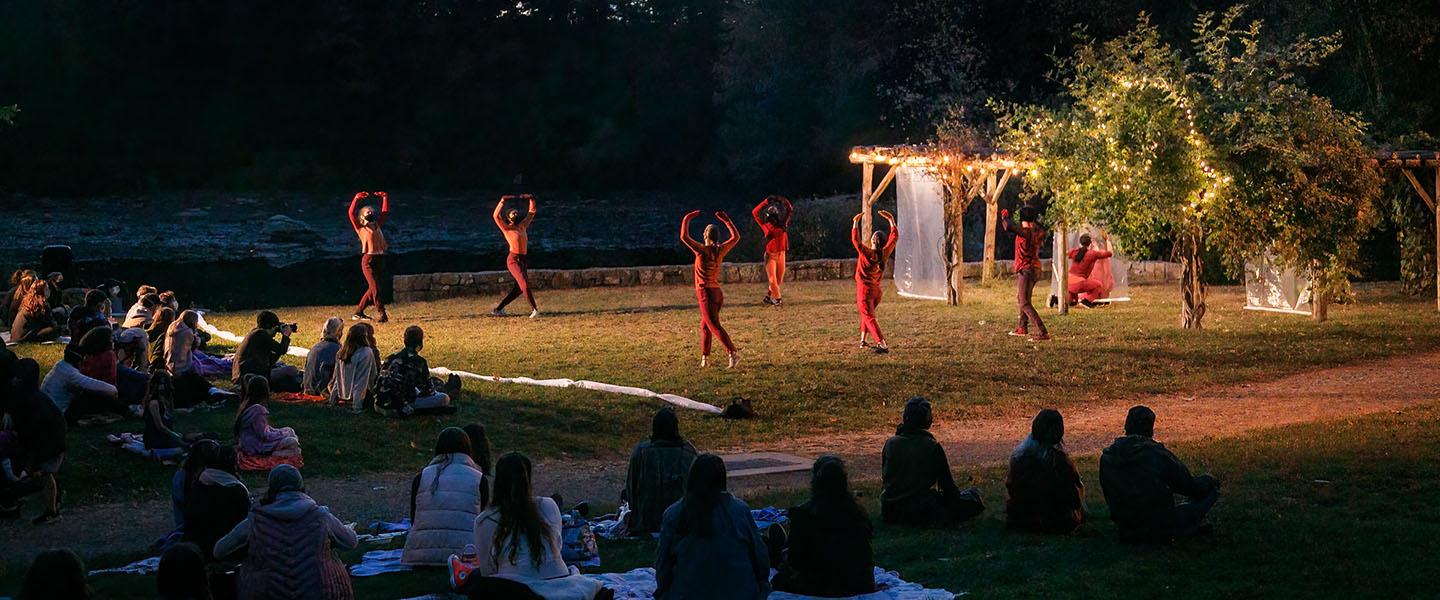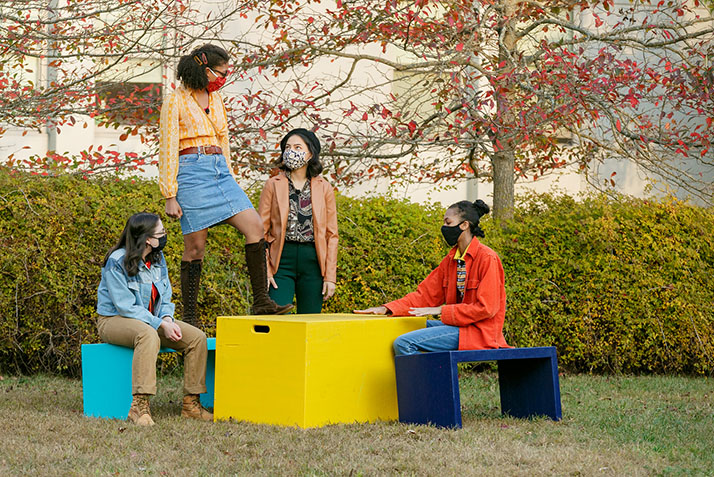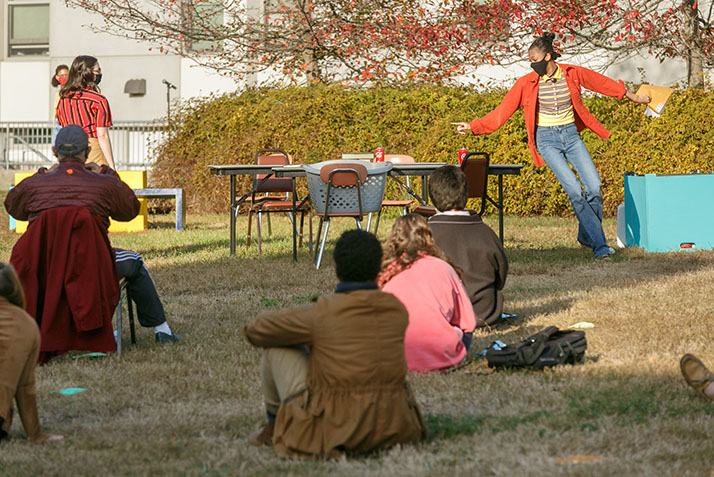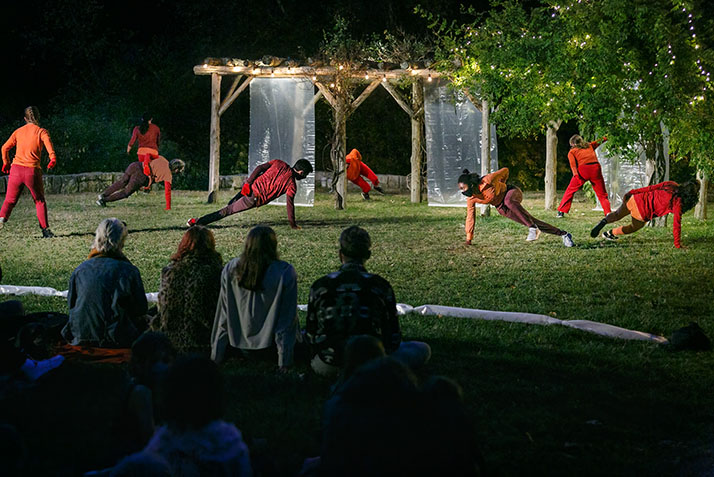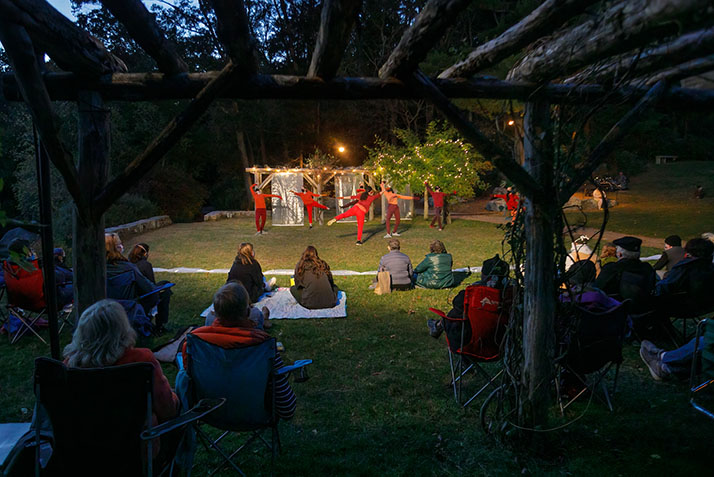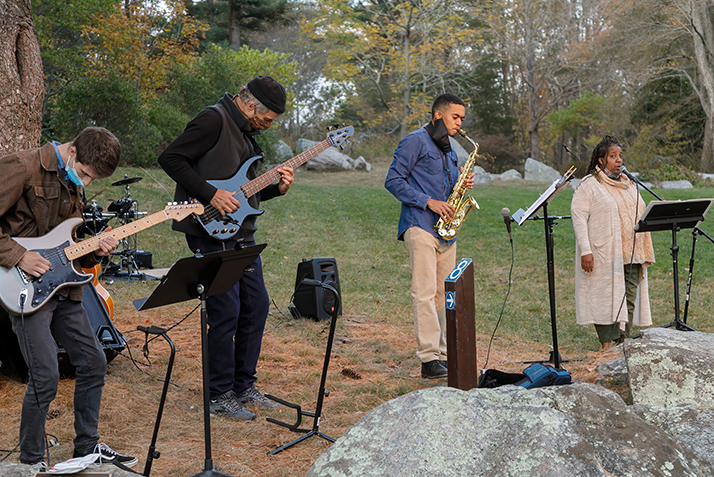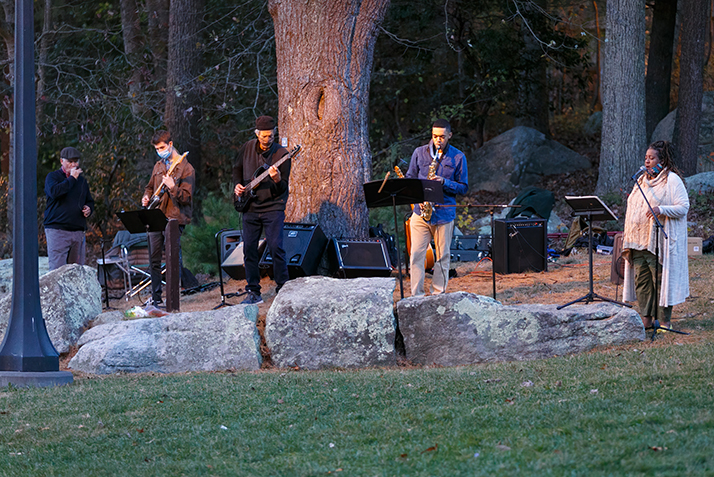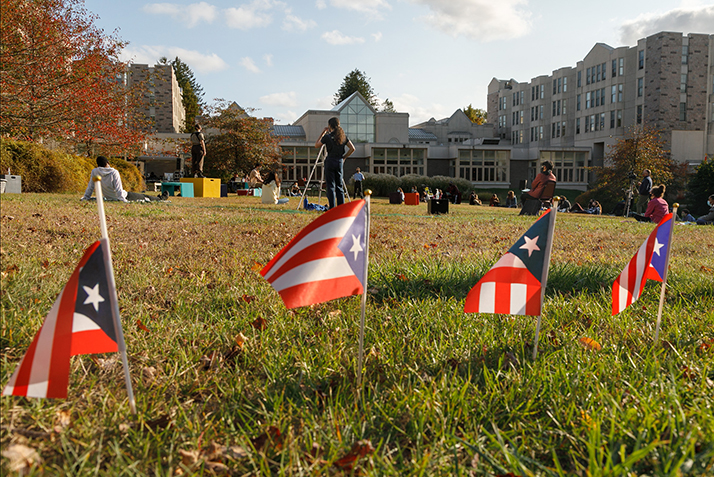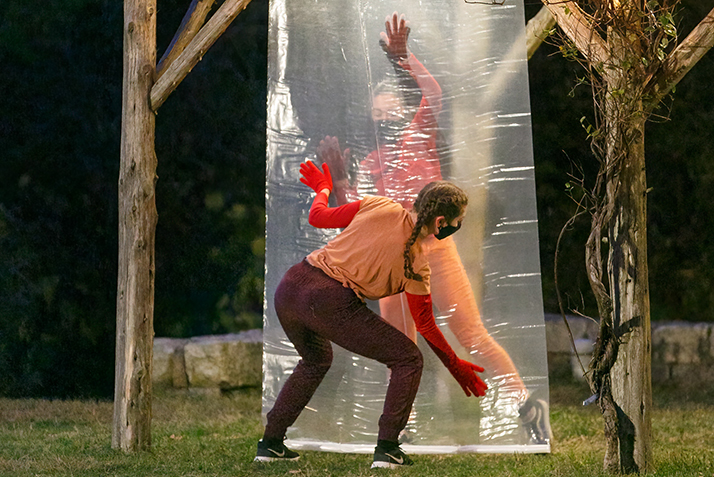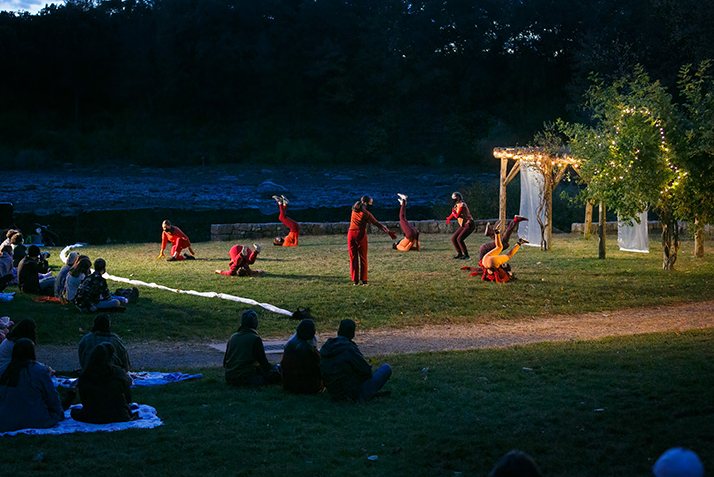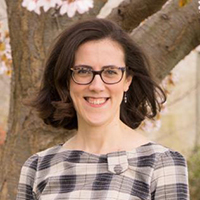
Live Action
Conn becomes one of the first colleges in the country to hold live performances again
The first theater and dance productions in the West were performed outdoors, from Ancient Greek dramas to traveling minstrel shows.
Now, in response to the ongoing pandemic and the challenges it poses, Conn’s performing arts are channeling the creative forces of history to adapt to this strange new era.
Both the theater and dance departments made their triumphant returns on Oct. 18, before audiences in outdoor spaces on campus, making Conn one of the first institutions in the country to bring back live performances.
Ken Prestininzi, associate professor of theater and chair of the theater department, believes it’s important to go back to basics and to revisit old or even ancient techniques, while also considering how modern technology might be mixed in to create hybrid models for performing safely during a pandemic.
“People think of theater as being in an inside auditorium with everybody sitting knee to knee, but that’s not the actor-audience relationship that has existed throughout most of history, so we wanted to look at different ways of defining that relationship,” Prestininzi said. “One of the most important elements of theater is to bring people together for a shared experience, so we can still do that with outside performances and social distancing.”
The College’s first play to be performed since the pandemic hit last spring was an original work titled Seven Twenty-Five, written by Ana Reyes-Rosado ’20, and directed by guest artist Jude Sandy and Andre Thomas ’20, who served as associate director. The story centers on the suppressed history of the Puerto Rican revolution in the 1970s and the question of who has the right to write or rewrite history.
Staged outside in the “Fishbowl” near Harris Dining Hall, the performances and the logistics leading up to them posed unique obstacles for the cast and crew. For example, the actors all had to be fitted for costumes remotely, measuring themselves by following instructions over a Zoom video call.
Despite those challenges, costume designer Carly Sponzo ’21 said creating the wardrobe for the play was a dream come true for a costume design major.
“These characters were such a treat to design for and I was so grateful to be able to do it during the pandemic when theaters everywhere are struggling,” Sponzo said.
For dancers, social distancing may arguably pose an even greater challenge than it does for those involved in theater, but that didn’t stop the dance department from performing for an audience in the College’s sprawling arboretum.
The piece, titled Reach, was choreographed by Lisa Race, associate professor of dance and acting chair of the dance department, and the event also featured musical pre-shows led by musician and composer for dance Richard Schenk.
“Dance is an embodied language, and COVID rules have made many dancers feel somewhat akin to caged animals with our studios delineated into small squares for dancing,” Race said. “So to dance freely, unencumbered, and to experience the joy of rigorous dancing felt rather momentous.”
Elisabeth Wales ’22 had never performed a dance piece outside, much less with the restraints of social distancing. But the shared challenges of dancing on uneven ground, wearing masks and creating a work that reflected the times we’re living in felt surprisingly liberating to Wales and her fellow dancers.
“The whole process took some getting used to at first, but it was also very interesting to see how much you can play with space outside when you’re not constrained by the boundaries of a stage or studio,” Wales, a dance and government double-major said.
“Performing outside was different, but I felt fulfilled to be in front of a live audience, dancing with people that inspire me to work harder every day.”
